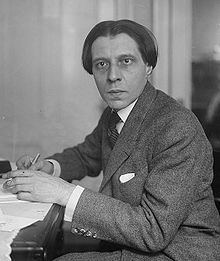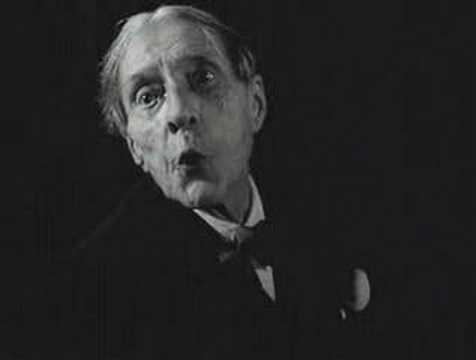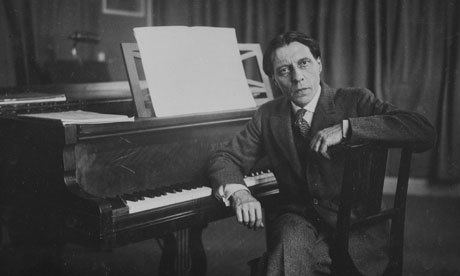Role Pianist Name Alfred Cortot | ||
 | ||
Albums Recital de piano (Mono Version), The Master Classes Books Rational Principles of Pianof, In search of Chopin, The Piano Music of Claude D, Rational Principles of: Piano, French Piano Music Similar People | ||
Chopin by Alfred Cortot - Complete Piano Works / Nocturne op.9 No.2 (recordings of the Century)
Alfred Cortot rare videos
Alfred Denis Cortot (26 September 1877 – 15 June 1962) was a Franco-Swiss pianist and conductor who was one of the most renowned classical musicians of the 20th century. He was especially valued for his poetic insight into Romantic piano works, particularly those of Chopin, Saint-Saëns and Schumann.
Contents
- Chopin by Alfred Cortot Complete Piano Works Nocturne op9 No2 recordings of the Century
- Alfred Cortot rare videos
- Early life and education
- Career
- World War II
- Death
- Contribution
- References

Early life and education

Born in Nyon, Vaud, in the French-speaking part of Switzerland, to a French father and a Swiss mother, Cortot studied at the Paris Conservatoire with Émile Decombes (a student of Frédéric Chopin), and with Louis Diémer, taking a premier prix in 1896. He made his debut at the Concerts Colonne in 1897, playing Beethoven's Piano Concerto No. 3. Between 1898 and 1901 he was a choral coach and subsequently an assistant conductor at the Bayreuth Festival. In 1902 he conducted the Paris premiere of Wagner's Götterdämmerung. He formed a concert society to perform Wagner's Parsifal, Beethoven's Missa solemnis, Brahms' German Requiem, and new works by French composers.
Career

In 1905, Cortot formed a trio with Jacques Thibaud and Pablo Casals, which established itself as the leading piano trio of its era. In 1907, he was appointed Professor by Gabriel Fauré at the Conservatoire de Paris, replacing Raoul Pugno. He continued to teach at the Paris Conservatoire until 1923, where his pupils included Yvonne Lefébure, Vlado Perlemuter, Simone Plé-Caussade and Marguerite Monnot.

In 1919 Cortot founded the École Normale de Musique de Paris. His courses in musical interpretation were legendary. For his many notable students, see here.

As a leading musical figure, Cortot traveled for many international music events. The French government sponsored two promotional tours to the United States, and one to the new Soviet Russia in 1920. He conducted several orchestras and was often called upon to provide piano accompaniment for touring artists when in Paris. Involved in music until his health failed, like Franz Liszt in his advanced years he taught master classes in piano.
On 21 March 1925, Cortot, working with Victor Records, made the world's first electrical recording of classical music: Chopin's Impromptus and Schubert's Litanei.
World War II
Cortot kept his musical activities during the German occupation of France during the Second World War and had to compromise with the Vichy regime that ruled part of the country during that period. He was twice punctually in 1941 and 1942, albeit never permanent, a guest member of the Conseil national ("National Council"), a non-elective consultative body of the Vichy government, which included a number of former members of the French parliament and non-political celebrities. Cortot accepted the invitation to play in concerts in Germany in 1942, thus continuing a musical collaboration which begun some 40 years before, however he declined later engagements, from 1943 onwards. He served as Vichy's High Commissioner of the Fine Arts. His Vichy connections led to him being briefly declared persona non grata after the Liberation.
The motives for his wartime activities have been disputed: they may have arisen from nothing more than his lifelong championship of Teutonic musical culture. Moreover, his wife, Clothilde Breal, daughter of the linguist Michel Breal, was of Jewish origin, and Clothilde Breal's cousin Lise Bloch was married to Léon Blum, the first Jew to become President du Conseil or Prime Minister in France. Cortot and the Blums maintained a close friendship. At any rate, he was banned from performing publicly for a year and his public image in France suffered greatly (though he continued to be well received as a recitalist in other countries, notably Italy and Britain, not to mention his native Switzerland).
Death
He died on 15 June 1962, aged 84, of uremia from kidney failure in Lausanne, Switzerland.
Contribution
As one of the most celebrated piano interpreters of Chopin, Schumann and Debussy, Cortot produced printed editions of the piano works of all three, notable for their inclusion of meticulous commentary on technical problems and matters of interpretation.
Cortot suffered from memory lapses in concert (particularly notable from the 1940s onwards), and often left wrong notes on his records. When in form, however, he showed a brilliant technique that could handle almost any kind of pianistic firework. This gift is evident in his legendary recordings of Liszt's Sonata in B minor (the first recording ever made of this masterwork) and Saint-Saëns' Etude en forme de valse. The latter thoroughly impressed even Vladimir Horowitz, who approached Cortot to learn his "secret" in performing it; Cortot, however, did not divulge it to him. He recorded more of Chopin than of any other composer, and his performances of Chopin's Piano Concerto No. 2 in F minor with conductor Sir John Barbirolli and Saint-Saëns' Piano Concerto No. 4 in C minor under Charles Munch, both originally issued on RCA Victor/HMV 78s but reissued on CD in the Naxos Historical series (among others) rank among the all-time great concerto recordings.
He also wrote a good deal of didactic prose, including a piano primer: Rational Principles of Pianoforte Technique. This book contains many finger exercises to aid in the development of various aspects of piano playing technique. It was originally written in French but has long since been translated into other languages.
Technical flaws notwithstanding, Cortot was among the very greatest musicians of the century, and his recordings and musical annotations have seldom been out of print.
In the 1920s, Cortot recorded a number of piano rolls for the Aeolian/Duo-Art company, since 78-rpm records were not always satisfactory in quality or maximum duration of the recording. Once he performed a Liszt Rhapsody weaving his own playing live at the piano with its mechanical reproduction. With eyes closed, some critics could not distinguish between the two. Later Cortot switched to disc technology, and he recorded right up to 1957, only five years before his death. In addition to his many recordings of works by Chopin, Schumann, and Liszt, he made important recordings of music by Weber, Mendelssohn, Franck, Debussy and others, and conducted his Ecole Normale orchestra (with a full nineteenth-century string complement) in a complete recording of the Brandenburg Concertos for RCA Victor in the early 1930s, in which he performed the lengthy solo cadenza of No. 5 in D major, on a modern piano in the grand Romantic manner yet exceedingly effectively in that admittedly archaic style, ending in a grand ritardando and rolled concluding D major chord as the orchestra re-entered with the concluding ritornello. He is also famous for his several trio recordings with Jacques Thibaud and Pablo Casals. Less famously but more appropriately and exquisitely styled, he accompanied singers such as Maggie Teyte and Charles Panzéra. There is even a late recording of Schumann's Dichterliebe in which he accompanied Gerard Souzay, of which the singer said, laconically, 'He was too old, and I was too young'. His final, postwar solo recordings are marred by more frequent technical slips, but he retained his uniquely eloquent phrasing and the free, Romantic performing manner for which he was famous.
Other notable pupils of Cortot during his later years included Samson François and Esteban Sánchez.
